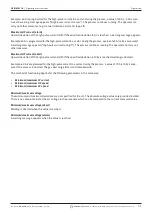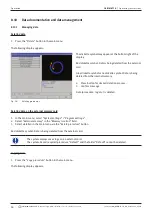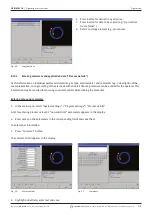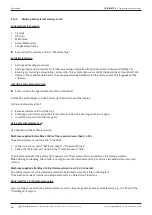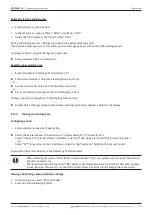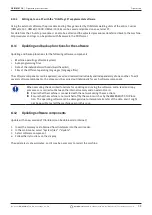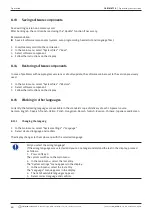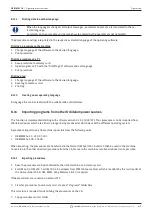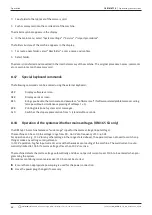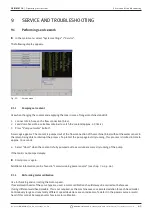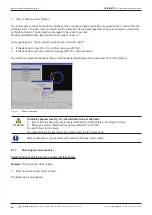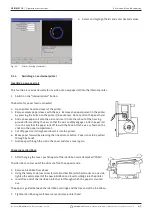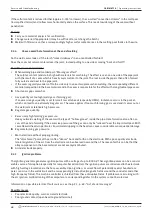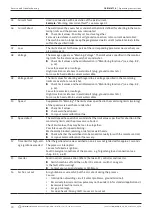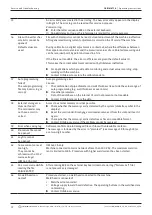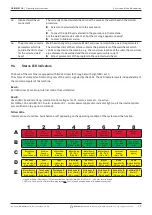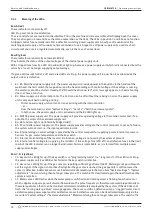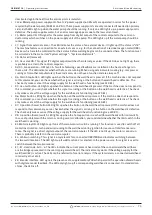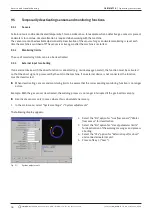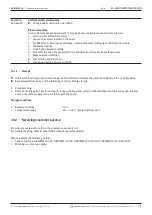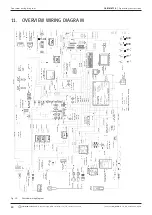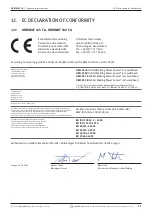
ORBIMAT CA
| Operating instructions
Service and troubleshooting
(09.03.15) OW_ORBIMAT_CA_BA_871060202_04_EN
orbitalum tools
GmbH, D-78224 Singen, www.orbitalum.com, Tel. +49 (0) 77 31 792-0
67
9.2
Possible application/operating errors
9.2.1
Uneven weld seam ("current fluctuations")
Observation
Is the weld seam uneven?
Possible causes
• Are current fluctuations the cause?
The OM 165 CA unit, for example, compensates possible current fluctuations in the mains in the range from 85 - 260 V.
If you do not receive an error message from the system during welding, the weld current is, with 99% certainty,
within the limit values set for the respective procedure.
• Pipe tolerances
• Uneven weld seams can occur if classic forming gases (which contain up to 30% hydrogen in addition to the nitro-
gen) are used with cassette heads inside the pipe. The hydrogen ends up in the welding pocket in an undefined
quantity and affects the welding result "randomly" as an energy carrier.
Remedy
X
Always use the same gas inside the pipe as in the weld head.
9.2.2
Annealing colors inside/outside
Possible causes
• Annealing colors arise only as a result of a reaction between the base material and another substance under the
effect of a high temperature introduced into the material by the arc. This other substances can come in the form of
oxygen, humidity or other impurities.
• Parts of grinding disks which remain on the workpiece as residue.
• Annealing colors at the start of the seam: Gas pre purge time may be too short. Annealing colors gradually fade as
welding progresses.
• Annealing colors at the end of welding: Gas post purge too short or (closed) weld head possibly opened too early.
• Depending on the design, more annealing colors occur on the outside of the pipes with open weld heads (TP series)
than with cassette heads.
• TP weld heads invariably react with more sensitivity to any drafts present. A draft can "blow away" the gas cover,
thereby causing extreme annealing colors.
Remedy
X
Clean pipe ends with a suitable solvent which evaporates without leaving residue (e.g. acetone).
X
Ensure that the pipe ends are bare metal.
X
Remove any and all oils and greases (from sawing or bending).
X
Ensure that the following parameters are set:
–
Gas quantity set sufficiently long, sufficient volume.
–
Recommendation: Approx. 7 L/min for the weld gas and approx. 2 - 3 L/min for the forming gas.
–
Gas pre purge time/gas post purge time set optimally.
9.2.3
Wide seam and no weld penetration
When welding without a filler wire, is the seam unusually "wide" without going "deep"?
Does increasing the current amplify the effect?
Is proper weld penetration (even on comparatively thinner walls) not possible?
Possible causes
The so-called "Marangoni effect".
In stainless steel, the percental component of sulfur is always limited upward, as sulfur forms inclusions (manganese
sulfide) which lead to small craters and other defects and which ultimately reduce the corrosion resistance of the mate-
rial. For this reason, the sulfur content is limited, e.g. to max. 0.030%. With this level of sulfur, welding is no problem.

